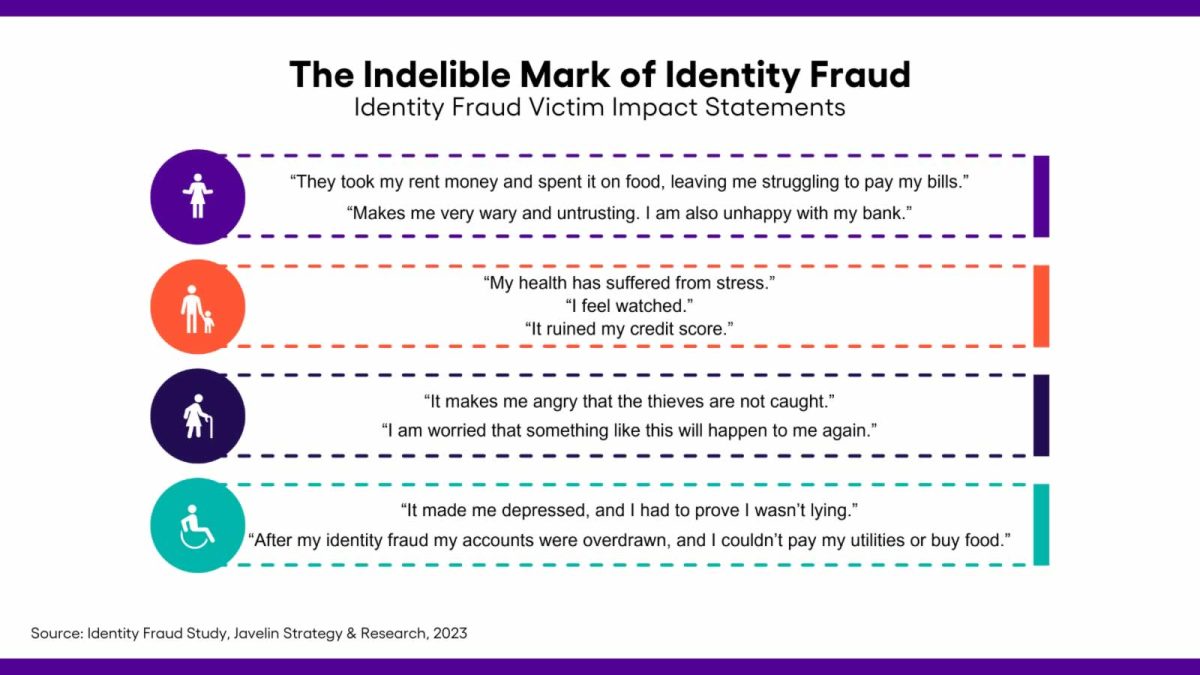Identity Fraud Losses Totaled $43 Billion in 2022, Affecting 40 Million U.S. Adults
April 3, 2025 Learning
It comes with encouraging news and a note of caution: Overall dollar losses are down $9 billion from the previous study year, but two decades of studying identity fraud show that the ups and downs require financial services providers and consumers’ ongoing vigilance to protect personally identifiable information.
The report sponsors share Javelin’s commitment to fraud prevention and education. Sponsors are AARP, Equifax, and FIS at the platinum level; TransUnion at the gold level; and BioCatch at the silver level. Javelin maintains independence in its data collection, analysis, and reporting.
The downward movement of the loss figures is a testament to the relentless efforts of the financial services industry to keep criminals at bay. However, criminals continually adjust their tactics, so much work remains to dramatically reduce the impact of identity fraud across the industry.
“Describing the current state of identity fraud trends as the butterfly effect is fitting,” said John Buzzard, Javelin’s lead fraud and security analyst and the report’s author. “Even minor occurrences can set off a chain reaction that has a significant impact on the daily lives and habits of identity fraud victims who may also be feeling ambivalent in the wake of a handful of recent bank failures such as Silicon Valley Bank.”
Highlights From This Year’s Report:
- Total identity fraud losses were $43 billion. That’s down from $52 billion the year before, a decline of 17%.
- Identity fraud scams victimized fewer people. Javelin credits this to consumer outreach by financial services and consumer advocacy groups, and stronger fraud prevention tactics at banks and credit unions. The decline in number of victims was 2 million, even as significant challenges persist in the overall battle against identity fraud and scams.
- Identity fraud has a disproportionately severe impact on non-white households. Exposure to data breaches affects 27% of Hispanic households and 26% of Black households—a considerable difference from White households—and the gap widens when compared with Asian households. The report describes the heavy toll identity fraud exacts on its victims, explores several contributing factors, and provides recommendations based on these findings.
- Significant reduction in new-account fraud. This is an indication that financial service providers are focusing more intently on identity and authentication practices through the use of fraud detection technology.
This year, for the first time, the report gathered victim impact statements, putting a human face to crimes that often shatter confidence, shred credit, and harm long-term financial well-being.
“It’s devastating to read impact statements from identity fraud victims, especially people who say things like, ‘After my identity fraud experience, my accounts were overdrawn, and I couldn’t pay my utility bills or buy food,’” added Buzzard.
This year’s report includes a 20th-anniversary retrospective that illustrates how technical innovations, societal changes, and economic indicators have influenced the past two decades of identity fraud activity and Javelin’s subsequent research.



